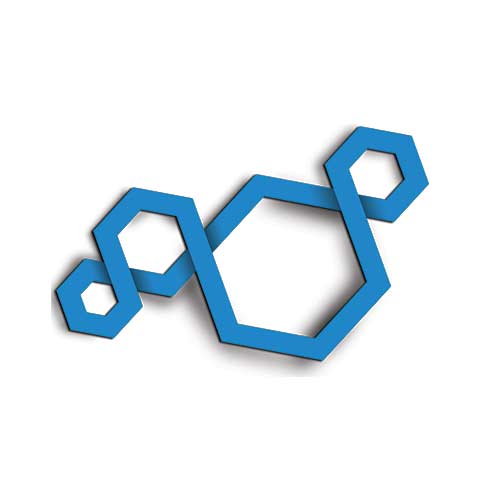How Your Field Service Management Style Increases Customer Ratings
Your field services workforce management style could be affecting your organization’s success. In recent years, a top-down management style has come...
6 min read
 ServicePower
:
April 17, 2020
ServicePower
:
April 17, 2020

COVID-19 has rapidly changed our world. Business as usual is no longer an option and field service management is no exception. The field service industry remains open as ‘essential work’ during the pandemic. In fact, with stay at home orders in place around the country customers need home appliances working now more than ever. Service workers recognize this need and are working hard to ensure their customer’s homes are fully operational. However, even with servicers still in business, industry standards and strategies are quickly shifting to accommodate the new normal.
Field Service ManagementField service managers are experiencing immense pressure to effectively lead teams and ensure safety compliance. The risks are running high and there is no room for miscommunication or distrust.
According to a report by the Harvard Business Review, before the pandemic the U.S. average for organizational trust was only 70%. Seeing as stressful situations exacerbate fear and distrust, it is even more important now to focus on developing trust within your organization. Technicians are assuming a very personal risk by continuing to work, and trust is necessary to ensure efficient and safe operations.
However, this complex situation raises difficult questions:
Maintaining effective leadership is decidedly difficult during a time of crisis and uncertainty, especially in field service management where technician and customer safety is a critical concern.
This blog will introduce and explain seven leadership tips for field service managers during COVID-19, with a focus on building trusting relationships that will outlast the pandemic.
7 Leadership Tips for Field Service Managers
1. Leverage Technology and Actionable DataDue to the in-person risk of COVID-19, there is an increased need to minimize technician and customer contact. This means accurately diagnosing issues prior to an in-person visit and improving first-time fix rates.
In field service conditions that carry high-risk, information is critical to making safe and efficient decisions. Thankfully technology allows field service managers, technicians and customers to access accurate information quickly and dynamically.
By improving visibility into customer history, parts and inventory, and technician skill and availability, field service software provides information integral to accurately diagnosing issues and improving first-time fix rates. For instance, leveraging field service software enabled Castelan Group to increase first-time fix rates by 15% and increase technician effectiveness by 25%. Utilizing software is a key advantage for field service leaders, and this potential for increased effectiveness should not be overlooked during a crisis.
When each in-person interaction carries a risk, minimizing the frequency and duration of in-person contact is a key tactic in prioritizing safety.
2. Empower Your Technicians to Set Safety BoundariesCertain in-person interactions will always be necessary in the field services. And as a leader, your first concern needs to be keeping your technicians safe.
Heightened safety is nothing new in the field service industry. According to the National Safety Council, every seven seconds a worker is injured on the job, and installation, maintenance and repair are among the top five occupations that result in the largest number of workplace injuries. Field service leaders are well versed in handling strict safety requirements and mitigating workplace harm to the best of their abilities, but this does look different in the current situation as in-person interactions are less predictable and more sensitive.
In the case of COVID-19, this means ensuring that each technician feels safe, and if they feel unsafe at any point, allowing them to leave the situation immediately. By empowering technicians to take their safety into their own hands, you encourage them to set their own boundaries and develop a deeper understanding of trust. No technician should be forced to work in an unsafe environment, and as a leader it is up to you to ensure these safety boundaries are upheld properly.
3. Communicate Clearly and at ScaleOne of the most crucial aspects of leadership during COVID-19 is communicating the changing safety requirements clearly and at scale. As new information surfaces and field service strategies are impacted, it is important to share this information in a timely manner with every single employee and technician.
By establishing daily and weekly updates for the entire team, you can maintain open lines of communication and prevent any delays in the transference of critical information. When communicating new safety procedures and protocols, it is imperative that you use clear and consistent terminology. There are numerous phrases that may sound similar, but have separate and distinct meanings in the context of the pandemic. Accidentally confusing these terms or procedures can result in serious harm to everyone involved, and is ultimately a product of poor leadership. Consider incorporating a comprehensive glossary of safety terms and procedures in each of the team updates in order to minimize confusion and ensure that each technician is as informed as possible.
Clearly communicating safety procedures and expectations to customers is also crucial, because there are preventative measures that customers must follow prior to an in-home visit from a technician. By following these guidelines regarding in-home visits, you can increase the safety of your technicians and customers.
4. Ensure Evolving ComplianceOnce safety procedures and protocols are successfully communicated, you must ensure that there are systems in place to train and track compliance. For instance, training videos are an effective way to teach field technicians safety protocols such as how to correctly handle and clean tools, and allow for detailed training at scale. In addition to visual training, these evolving protocols should be embedded into existing workflows, and made available to technicians in written form prior to and during their service appointments. Providing easy access to training materials is integral to ensuring compliance, especially with the safety protocols changing frequently.
When safety protocols are not followed correctly, are there measures in place to catch and stop violations? Identifying and addressing violations is a necessary part of guaranteeing your technicians and customers’ safety.
5. Provide Timely FeedbackCommunicating and collecting feedback from your technicians and customers is an easy yet important way to ensure safety compliance and provide the highest quality customer experience. Automating surveys to be delivered to both customers and technicians directly after a job is the best way to gain timely feedback. This provides an opportunity for technicians to report back about their safety concerns, and authenticates your trusting relationship with them.
Additionally, it grants your customers the opportunity to report back about technician safety compliance, and it provides an immediate outlet for any customer dissatisfaction. Resolving these issues in a timely manner demonstrates that your organization cares about continuously improving the quality of your customer experience. And as a leader, facilitating positive customer experiences is a crucial component to your organizations’ success. For instance, the 2019 JCurve Digital case study explains that a positive emotional experience with a company renders customers 12 times more likely to recommend the company and five times more likely to forgive a mistake.
6. Recognize and Reward ExcellenceImplementing a strategic recognition program is highly beneficial to improving your team’s emotional outlook, increasing your organizational productivity, and building trust. During the COVID-19 outbreak, your technician team is most likely feeling the negative impact of these high-stress situations and the annoyance of being told exactly what to do and how to do it.
By recognizing and rewarding your team members for successfully following complex and high-maintenance safety protocols, you mitigate a portion of that stress and annoyance. You also provide positive encouragement to continue complying, which helps you reach your organization’s goal of safe business operations. In fact, companies with strategic recognition in place diminish negative safety incidents up to 49%, and score 10% higher in customer satisfaction ratings.
Strategic recognition is more than just random moments of appreciation, it intentionally links each recognition moment directly back to your organization’s values and strategic objectives, giving those moments more meaning and reinforcing these specific values in the behavior of your team.
Rewarding compliance and individual success also drives greater levels of sentiment and trust by showing that you care about the health and safety of your team.
7. Be Transparent and Show VulnerabilityTransparency is the key to successful leadership. Moreover, transparency fosters the kind of trusting relationships that will outlast the pandemic.
This applies to external transparency with your customer base and internal transparency with your employees and technicians. According to a report by the Harvard Business Review, only 40% of employees report that they are well informed about their company’s goals, strategies, and tactics. This uncertainty about a company’s direction can lead to chronic stress and undermine trust, teamwork, and productivity. Transparency is even more important when managing a third-party workforce, because contractors are inherently more isolated from the company culture, values, and goals.
Field service leaders can embody transparency and show vulnerability in different ways, ranging from simple tasks like asking for help from colleagues, to openly sharing financial and operational information about your company’s goals and strategies. This is not exclusive to internal transparency, in fact, being forthcoming with your customers about your company’s current condition is a meaningful way to build trust and ultimately loyalty with your customers.
Find the Silver Lining in Field Service Management
While the COVID-19 outbreak is posing widespread and immense challenges, as a leader it is up to you to find and accentuate the silver lining. For instance, in this moment in time you can focus on improving the health and safety within your organization, and establish ways to incorporate these values into your company culture moving forward.
By leveraging data, empowering your technicians, communicating clearly, ensuring safety compliance, providing feedback and recognition, and exhibiting transparency, you can skillfully lead your organization through these challenging times and build trusting relationships that will outlast the pandemic.
To learn more about improving your leadership expertise by leveraging data, explore ServicePower’s intelligent field service management suite.

Your field services workforce management style could be affecting your organization’s success. In recent years, a top-down management style has come...

The field service industry is rapidly changing as the digital transformation renders manual field service processes and workflows obsolete. Staying...

Field service companies looking to improve their value, grow their revenue, and become a trusted resource in the industry need to start focusing on...